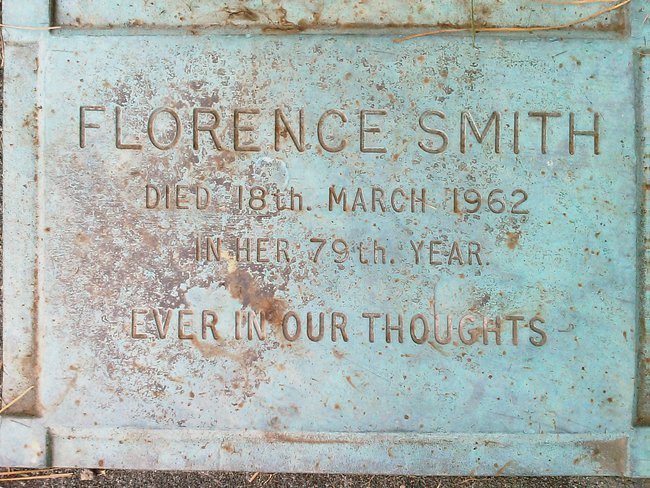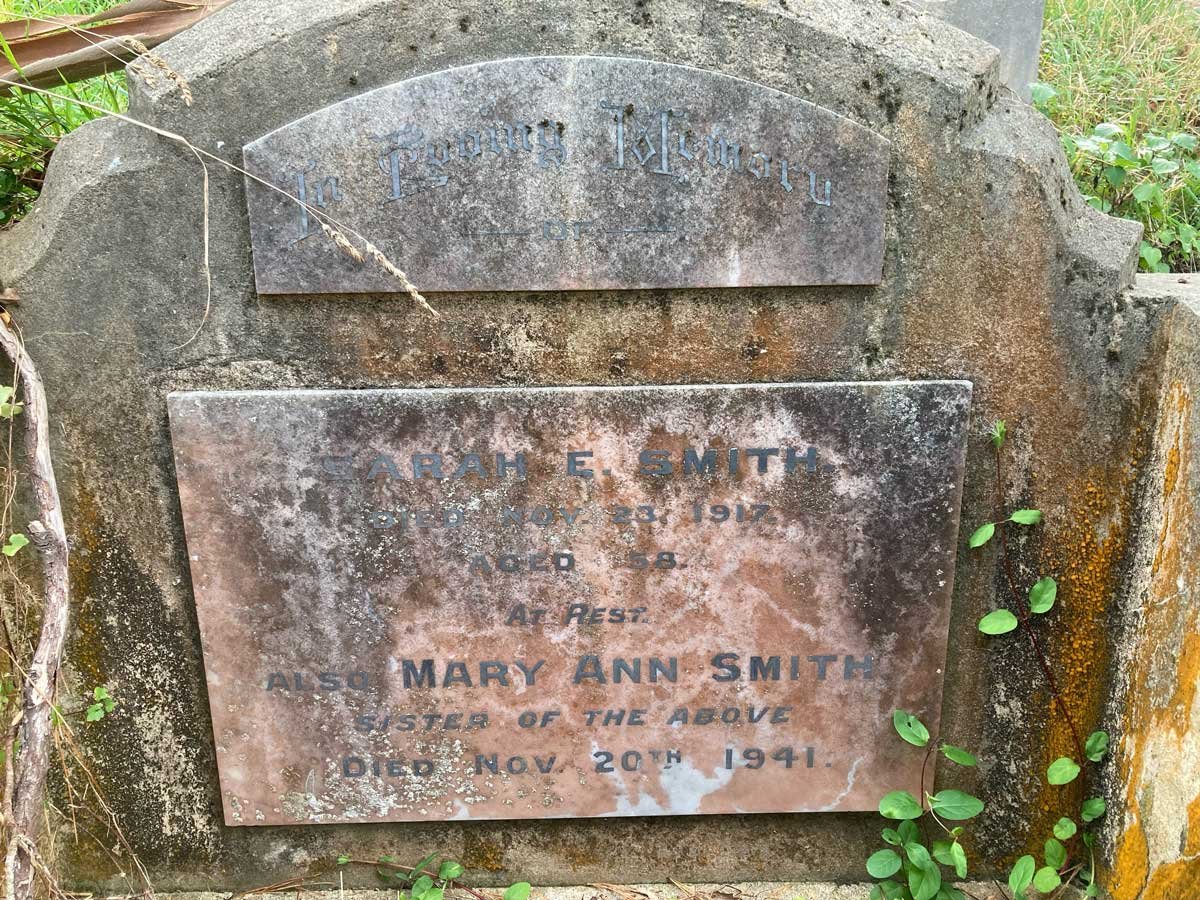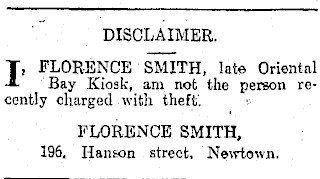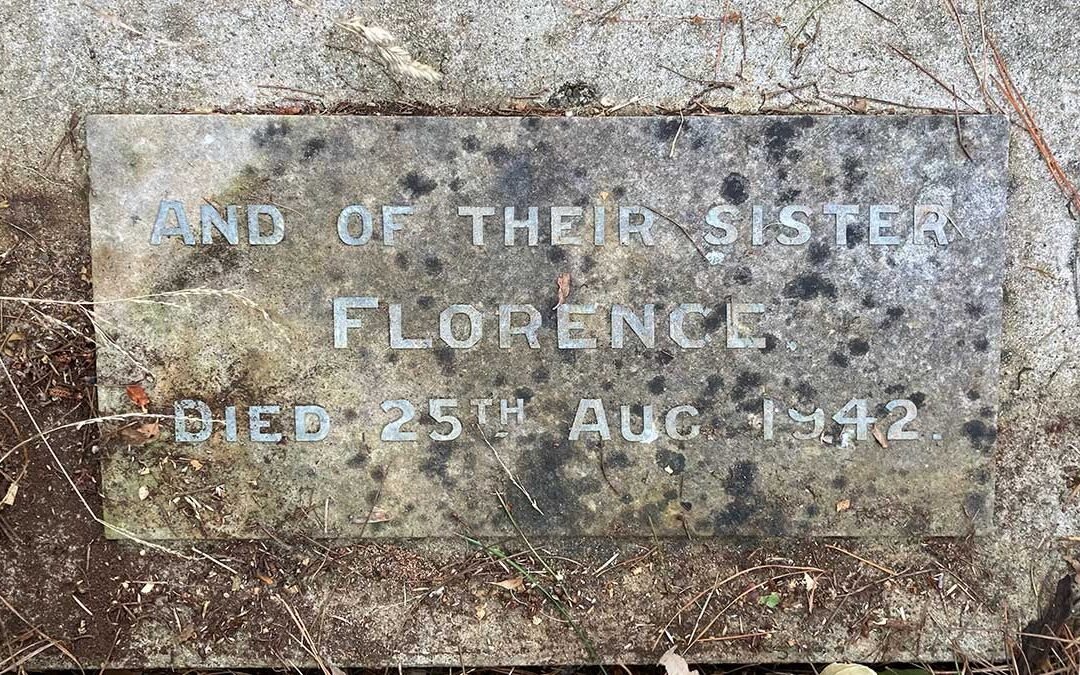In about 1994, my paternal grandmother gave my family a copy of a book she had written. It’s called ‘Finding My Roots: A Story For My Family‘. It was about her journey to find her birth parents in England.
I’ve always found the book fascinating. Over the years, different bits have stood out. Snippets of the larger family tree, and descriptions of life in the 1930’s and 40’s really caught my imagination. But every time I have read it, this sentence has felt somehow significant to me:
“Phoebe Smith had three sisters – Polly, Florence (‘Florrie’) and Sarah Elizabeth Smith who came out to New Zealand where they opened a cake shop in Wellington. They were fine pastrycooks.”
Finding My Roots, by Pat Jenkins (Palmerston North, 1994)
That’s it. That’s all I knew about these women. Each time I came across the sentence, I wondered to myself – ‘who were these women? And where did they go? Mmm, cake.’
Amateur genealogist
Over Waitangi Weekend, I decided it was time to learn how my family made it to New Zealand. I thought I’d be done in a month (and for the most part, I was), but it also… sparked something.
Along the way, some kind of bug bit me and it turns out I really love doing this. I love digging up stuff we didn’t know about ourselves. It’s changed how I view my place in this country. I really recommend it as an exercise, especially if you are descended from European colonial settlers.
The truth is, my garden is really suffering right now. I’m basically addicted to looking at dead people’s wills, electoral records, and digging up hidden secrets at this point. I am fairly certain it hits the same notes in my brain as gambling does for a gambling addict.
When you uncover something, it really does feel incredible. It’s also a great distraction from the state of the world right now.
The Smith spinsters
But back to our three Smith sisters. I didn’t have their legal names. Their last name is ‘Smith’. And they’re spinsters.
I could have less to work with, but it wasn’t much to start. Thankfully, it’s 2022. Records are online. I have a laptop and an internet connection. Algorithms exist to take away some of the hard work my grandmother had to do – flying to London and spending days walking between archives to search through books and microfiches manually.
I put the bones of what I knew about my family into Ancestry.com from my grandmother’s book. It did it’s magic and via UK census records connected to my great-great grandmother (their sister), gave me their full names and birth years.
Polly Smith was Mary Ann Smith, born in 1866. Sarah was Sarah Elizabeth Smith, born 1860. Florrie was Florence Smith, born in 1870. All in Burnley, Lancashire.
Finding a Smith in a page of Smiths
I have approached this puzzle in so many ways I’ve forgotten half the things I tried. I know I’ve searched every possible synonym for ‘cake’ I could think of on Papers Past. But the biggest news of the week for me was I found the Smith sisters!
To do it, I got Births, Deaths and Marriages to spit me out a list of every ‘Florence Smith’ that died in New Zealand between 1910 and 1960. When you do that, it gives you their name, year of death, and age at death. I cross-referenced that with her birth date from the UK census. The only one that fit was the Florence Smith who died in 1942, age 72.
My grandmother’s book explains that the breakthrough in finding her biological parents (also Smiths) came through probate records. And honestly, probate records provide context to relationships that other records don’t have. And this is not the first breakthrough they have provided me.
Some time after you die, your Final Will and Testament will be uploaded to the Archives New Zealand digital record system and people will see you left things to your son, your cousin, your best friend, or your favourite charity. If you leave a particular asset or possession, people will see that. If you were a dick about it, people will see that too.
I looked 1942 Florence up.
And her Will spilled all the tea. It immediately confirmed she was the Florence I was looking for. She left things to people that were sitting in my tree, including my great-grandmother. And quite vitally, she told me where her sisters were: Karori Cemetery.
Filling in the blanks
From there, I found the death dates of the other two. Sarah Elizabeth, the eldest, died first in 1917, aged 58. She died ‘intestate’ (without a will) so her probate date doesn’t match the death date and provides absolutely no context.
She was followed by Mary Ann in 1941, aged 75. Polly did leave a Will – but she just left everything to her younger sister, Florence.
But I guess Florence felt like she was the end of the line. And I also feel like she was the most organised. Perhaps the most scared of being forgotten. Because she was very generous to her nieces and nephews, essentially giving something to each surviving member of the next generation. That’s how I am 100% sure I have the right Florence. This combination of people is basically impossible if she wasn’t ‘Our Florrie’.
She actually was that long-lost aunt who left her fortune (and it was a fortune, worth about $250,000 in today’s money) to her nieces and nephews from the other side of the world!
Friends of Karori Cemetery
As I was marveling at how amazing it was I’d finally found them, I checked the photo of the plaque on the council website. And I noticed something unusual:

Did you catch it? The death date is wrong. So is her age. I felt indignant! I was ready to fix it and had even written a new epitaph before I realised it was most likely human error at the point of uploading a photo to a database, rather than an error on the grave itself.
But I live in Te Hiku (the Far North) at the top of New Zealand. Karori Cemetery is in Wellington, at the other end of the island, in the middle of the country. Petrol is $3/litre, and also, there’s a pandemic going on. I can’t just go check it out myself. So I emailed and tweeted Friends of Karori Cemetery to see if they could help.
The grave turns out to be in a rather inaccessible part of the cemetery, but within a few hours I had photos confirming it’s only the website that is wrong, and that the sisters are safe, if a little scruffy.



In her will, Florence directed:
“that at a convenient time after my interment such grave shall be restored and put in good order and condition.”
The Friends of Karori Cemetery have kindly offered to seek the appropriate consents and add them to their maintenance list; so the grave will be restored and put in good order and condition, when it is convenient.
But what about the cake shop?
I’m still working on it. My tweet about finding them got a bit popular and someone sent me this.

Evening Post, 17 April 1923, page 2
There is the possibility the ‘cake shop’ was the Oriental Bay Tea Kiosk – which was actually a large and popular venue running from mid-1913 to 1917. It was custom-built in 1913 as a tea house and dancing venue by the Oriental Bay Syndicate.
When it opened, it was to be managed by one Mrs Wallyn. But it did boast a modern and purpose-built kitchen with a large bakers oven. It’s possible the sisters worked there, but quite difficult to prove 100 years after the fact.
That said, it had living quarters with three rooms. It’s a stretch, but if they lived there then it is possible a future document will provide the vital connection. I’d even be willing to accept an address in Roseneath, Oriental Bay, or Mount Victoria as close-enough proof.
In 1916, the top floor was converted into a hotel, which ran with the tea rooms below as the Oriental Bay Kiosk until 1920. And if the Florence Smith who worked there is ‘Our Florrie’, then she had left by 1923, by which time it had been converted into a hotel.
Cross-referencing
I’ve run through election records and I have tracked a Florence Smith, spinster through Wellington over the 1920’s and 1930’s. Those records do not match the address given in the ad. But it’s possible I’m following a different Florence Smith. It doesn’t look like the other two sisters voted, maybe ‘our’ Florence didn’t either and I’m barking up the wrong Smith.
I’ve requested the records about who purchased the burial plot from the Wellington City Council. I’m guessing it was Florence or Mary Ann. But vitally, it might give me an address I can cross-reference to either the address given in the paper, the Oriental Bay Tea Kiosk, or the electoral rolls.
I’ll also add their death records to my list of records to purchase. They are likely to contain more information that might give me some leads into their actual lives, rather than just their deaths.
I don’t know when they arrived in New Zealand, or on what ship. I don’t know much about them at all really. But I do know more about them now than I did a week ago, and despite dying as spinsters, they are not entirely forgotten. There’s still a long-lost great-great grand niece 80 years on, thinking about them and ensuring they are remembered.
More to the story
This post is just one part of the story. If you haven't read them all, they're all listed here.
Part One - The spinster Smiths
Part Two - The Death of Sarah Smith
Part Three - Finding the 'family stuff'
Part Four - The Smith sister's boarding houses
Part 4.5 - A week away (where I go to Wellington - some updates to this story)



Hello Kat, you are very fortunate being able to locate your ancestors with as common a name as SMITH.
The tiny thread through which I manged to find my paternal great grandmother, Jane WILLIAMS, was from the name of the guardian giving her permission to marry. Her Intention to Marry notice revealed that his name was the unusual PALTHORPE. (ITM notices are not online and available to view as only a hand-written mess if you personally go to Archives in Wellington). Further investigation showed that PALTHORPE was the manager of the Burnham Industrial School / orphanage in Christchurch. Examination of the Industrial School records (again only viewable in Wellington) eventually revealed that she had been transferred from Auckland. They also revealed that Jane with her older 2 sisters and 2-year old brother were committed to the Industrial School on 14 August 1879. None of the children could write and only Elizabeth, the oldest, aged 10, could read. They had been abandoned by their mother and their father was too sick to care for them. The mother went on to have 2 more children to 2 different men before her death, a total of 10.
Wow! That’s quite the story!! Yes, Smith is an annoying one to track down – and there were a lot of ‘Florence’s in the mid-late 19th century too! Palthorpe sounds like a lovely one to follow. I’ve got one character who I’m going to need to look up in the Industrial School roll (a ‘John William Lewis’), it’s on my list for the next time I’m in Wellington. That said, I’ve found it fairly easy (and cheaper than the trip to Wellington) to ask them to digitise files. I’m currently waiting for a divorce to be digitised and sent to me. Once they’ve been done, the file goes into the online system for general access. So maybe it’s worth requesting the Industrial school rolls? Sounds like a lot of people would find it useful!
Hi Kat, if u would like the Fulton tree I can help you as I have one which Gaywyn did
back to Henry Fulton who was a rebel from Ireland and got sent to Norfolk to do his time. Gran Shirley’s one starts with a German Farming lad and Mum’s Father came from England.Cheers Rob
Hi Rob. Gaewyn’s tree is online and I used it a lot to build out my tree. I’m in touch with Gaewyn as well. I’ve got the Fultons going beyond Henry Fulton in Ireland, and have found the point where Henry Louis Schaeffer arrived (there’s a good article on the Schaeffers on the NZ Herald website). I’ve even uncovered a few interesting stories that weren’t there before! I have been wondering if you’ve ended up with any family photo albums though? I’m particularly keen to find a photo of Les’ grandmother, Jessie Annie Johns/Lewis/Callopy (Mona’s mother) if it exists.
Hi kat, Yes I remember Nana Callopy and I think I have a photo of her. She used to live in NewPlymouth then moved over to Taradale. Have you been in touch with Tony as he has all Pats photos and slides which he has put on disc. I have photos of Nana Retter. Tonys number [REMOVED]. Cheers Rob
Yeah, I don’t think she was in Taradale for long – I’ve got her writing a will in New Plymouth Hospital on 17 Nov 1956, dying in Taradale 21 Nov 1957. So yeah I guess you could have met her eh? I have dug up the wildest story about her first husband (Mona’s father), but I’m still working to confirm facts. I’ve been absolutely combing through her life, and at this point she feels like a friend – but I’ve never seen a photo of her! I’ll get in touch with Tony, thanks!